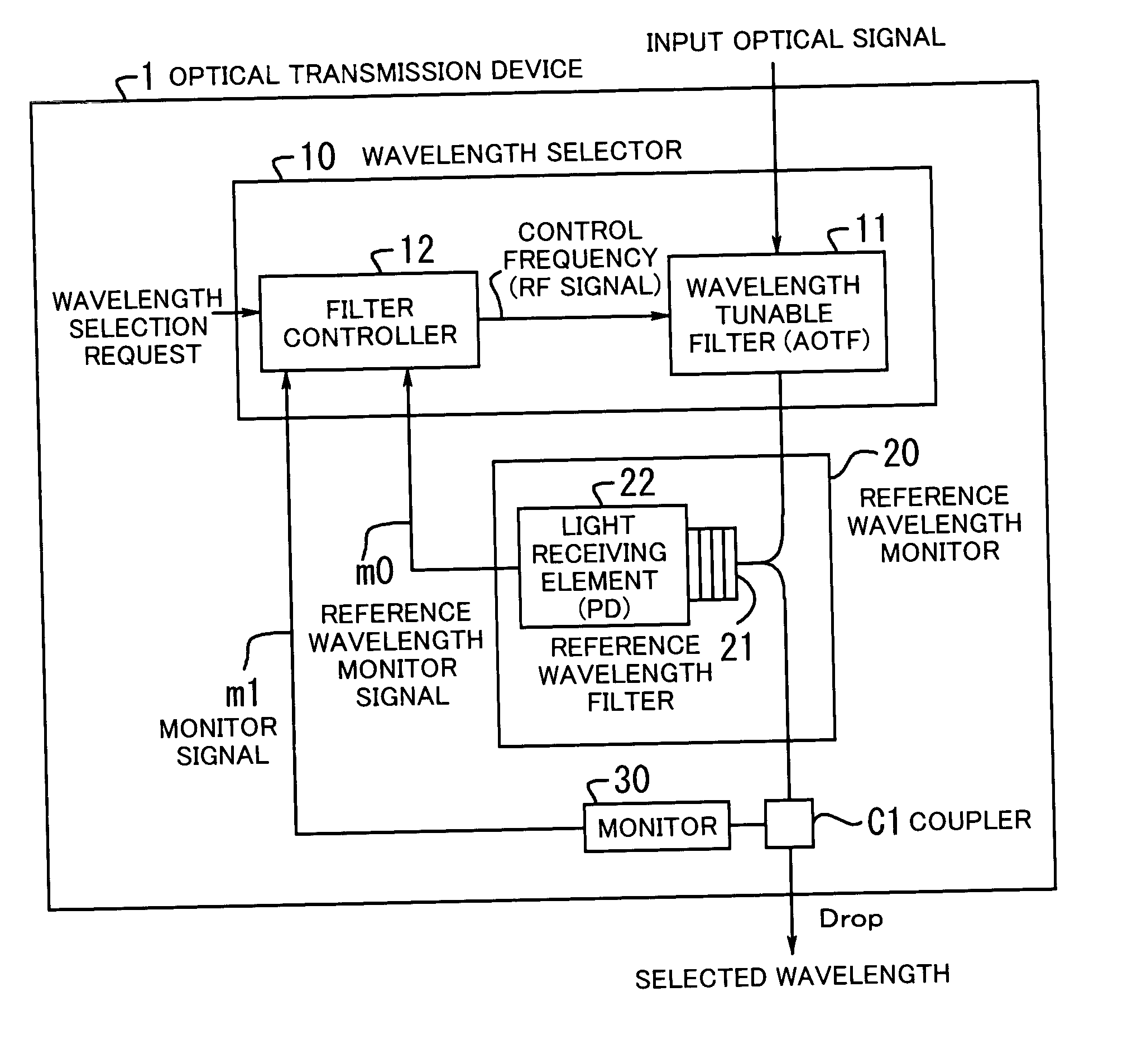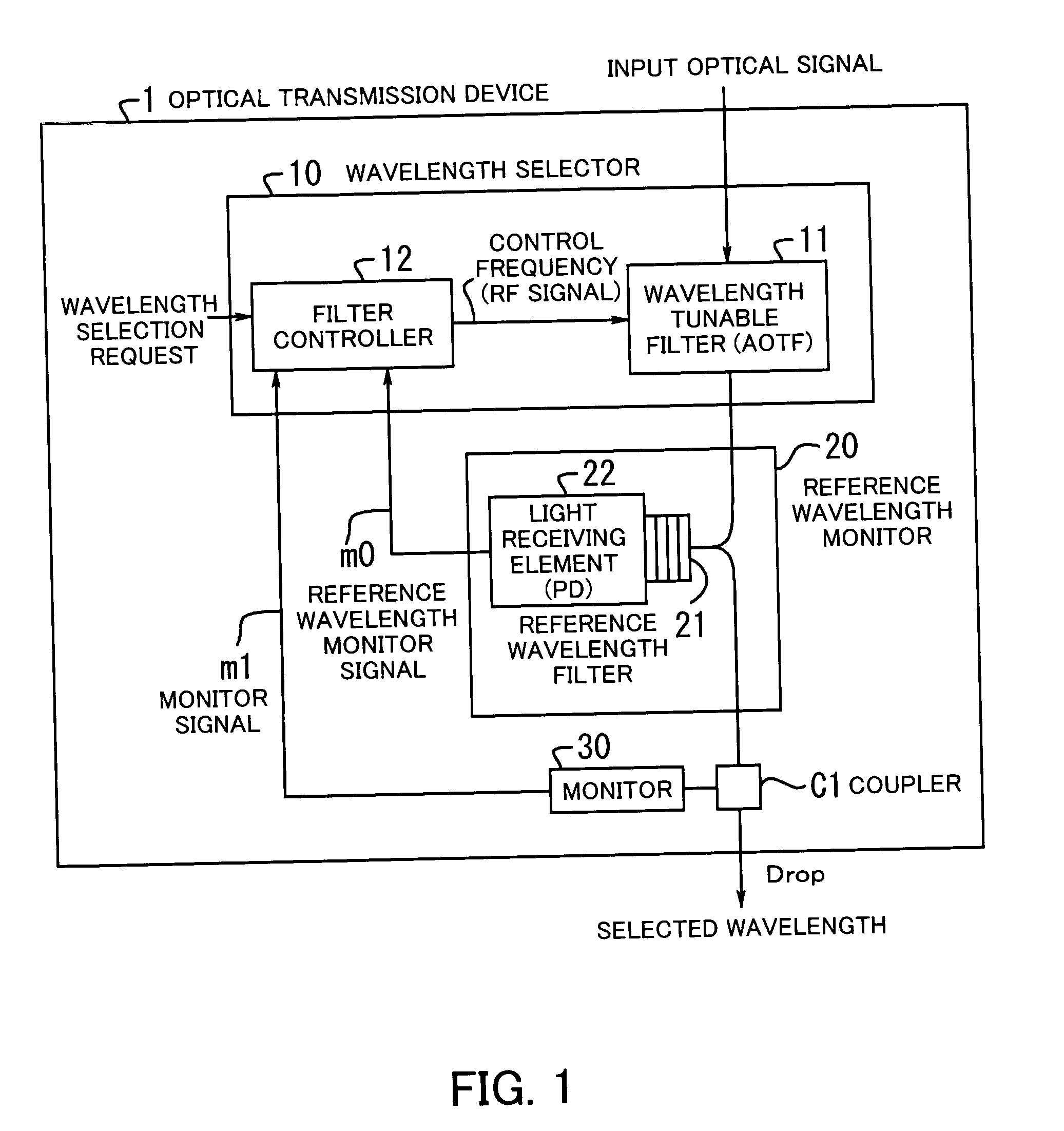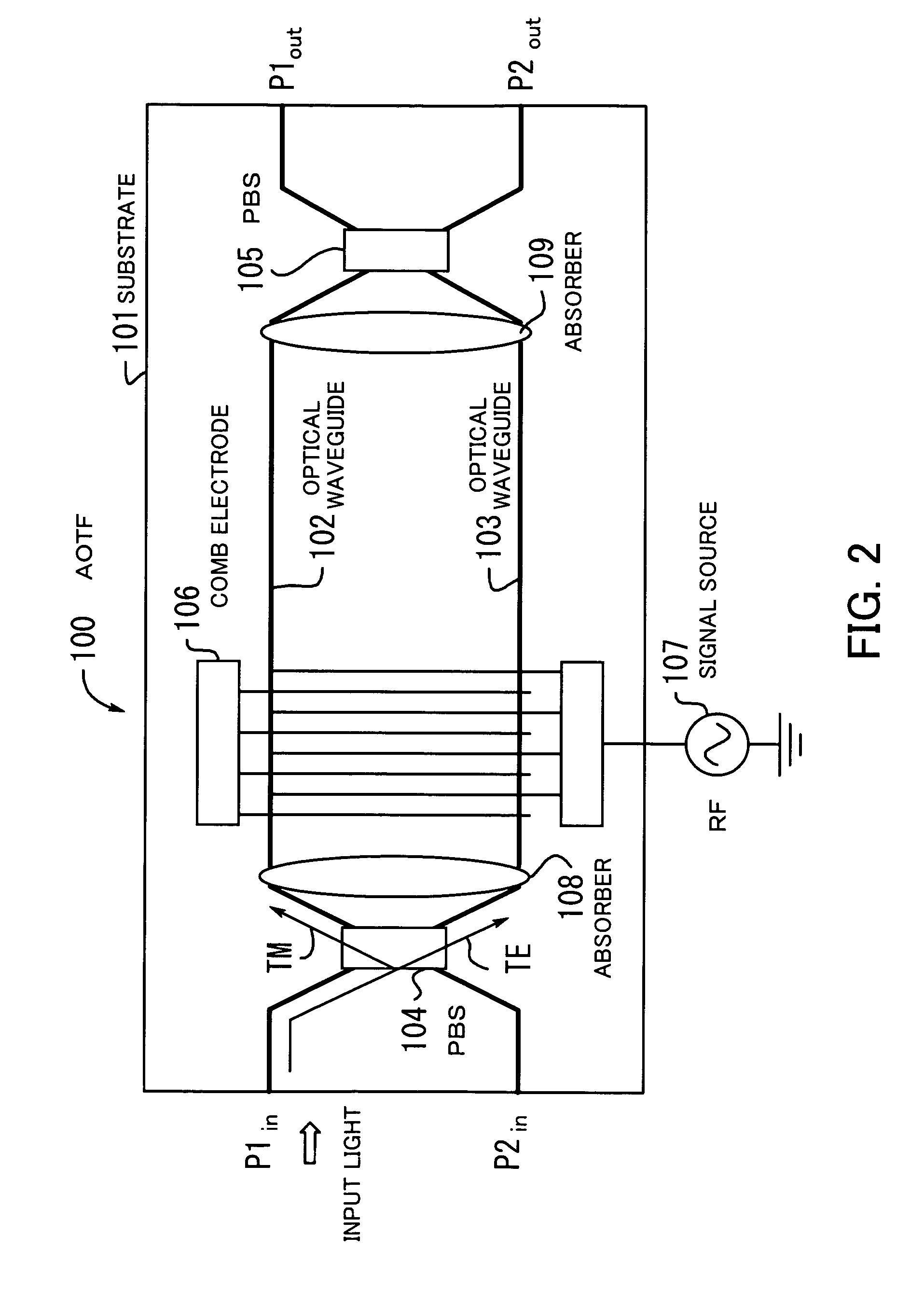Optical transmission device
a transmission device and optical technology, applied in the field of optical transmission devices, can solve the problems of erroneous detection of side-peak noise, wrong connection, and over-1,000,000 per unit, and achieve the effect of improving the quality and reliability of oadm function, and allowing the configuration of highly flexible and economical oadm networks
- Summary
- Abstract
- Description
- Claims
- Application Information
AI Technical Summary
Benefits of technology
Problems solved by technology
Method used
Image
Examples
Embodiment Construction
[0058] Preferred embodiments of the present invention will be described below with reference to the accompanying drawings. FIG. 1 illustrates the principle of an optical transmission device according to the present invention. The optical transmission device 1 comprises a wavelength selector 10, a reference wavelength monitor 20 and a monitor 30, and transmits an optical WDM signal.
[0059] The wavelength selector 10 includes a wavelength tunable filter 11 and a filter controller 12. The wavelength tunable filter (hereinafter AOTF) 11 variably selects a wavelength in accordance with a control frequency (RF signal frequency).
[0060] The filter controller 12 applies an RF signal to the AOTF 11 while scanning wavelength over an entire signal bandwidth. Based on a reference wavelength monitor signal m0 then received, the filter controller detects a reference control frequency (hereinafter reference RF) which permits the AOTF 11 to select a reference wavelength and in accordance with which...
PUM
 Login to View More
Login to View More Abstract
Description
Claims
Application Information
 Login to View More
Login to View More - R&D
- Intellectual Property
- Life Sciences
- Materials
- Tech Scout
- Unparalleled Data Quality
- Higher Quality Content
- 60% Fewer Hallucinations
Browse by: Latest US Patents, China's latest patents, Technical Efficacy Thesaurus, Application Domain, Technology Topic, Popular Technical Reports.
© 2025 PatSnap. All rights reserved.Legal|Privacy policy|Modern Slavery Act Transparency Statement|Sitemap|About US| Contact US: help@patsnap.com



